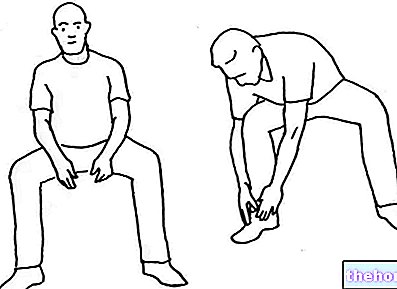Edited by Dr. Stefano Casali
Field assessment of the collapsed athlete begins with a quick analysis of the conscious level: if the athlete is awake and alert, the causes of the collapse are likely benign. When the level of consciousness decreases, timely cardiac rescue becomes necessary. Controlling the airways, breathing and circulation becomes paramount. The athlete's general condition, ie rectal temperature, heart rate and blood pressure, must be examined as soon as possible. Even the moment in which the athlete has lost consciousness can be a sign of further concern: if it occurred after the end of the race it is certainly less worrying than the possibility that the collapse occurred in the race.
History
Coaches, trainers, friends and other observers can provide valuable information. Here are some key questions to ask them too:
1. How much fluids and what kind of drinks did the athlete take during the race? The answer to this question is an important indication to understand the level of dehydration, hyponatremia or hypoglycemia.

3. Did any vomiting or diarrhea occur during the competition? If so, it is a further contributor to dehydration.
4. How many carbohydrates were consumed before and during the competition? An insufficient intake of carbohydrates can cause the lowering of the sugar level (hypoglycemia), especially in people with diabetes.
5. Has the athlete had any disease or surgery that may have decreased heat tolerance or fluid balance?
6. Was the athlete trained sufficiently and ready for competition? Inadequate preparation facilitates the incidence of collapse.
7. Does the athlete have symptoms such as chest pains, palpitations, nausea or shortness of breath that can be a warning sign of an imperfect physical condition?
N.B. Long-term races are meant
Drugs and Substances that negatively affect thermoregulation
- Anticholinergics
- Antihistamines
- Beta blockers
- Diuretics
- Alpha-methyldopa
- Phenothiazines
- Tricyclic antidepressants
- Drug abuse
- Alcohol
Examination
The examination of the athlete who has suffered a collapse should be based on continuous monitoring of the general condition of the patient. Heart rate and blood pressure they should be measured in both supine and standing positions. When the athlete is in an upright position, if the heart rate increases by 20 beats per minute or the systolic pressure drops by 20 mm Hg and the diastolic pressure by 10 mm Hg, then we can speak of a gradual depletion of blood volume and probable dehydration. . Most endurance athletes have a very low resting heart rate and a value of 80 beats per minute at rest can represent tachycardia for them. rectal temperature to those athletes with impaired mental function to possibly establish the presence of heatstroke. (Measuring the temperature in the ear and mouth is not sufficient to establish the exact body temperature). A rectal temperature of about 40 ° C requires immediate cooling.
State of hydration
The athlete's hydration status can be established based on the amount of fluid ingested and the ability to produce saliva. Dehydrated athletes are very thirsty and will have difficulty producing the amount of saliva needed to spit. Also, skin turgor it greatly decreases in severely dehydrated athletes, the skin looks soft, flabby and takes the form of a newly pitched tent (precisely the "tent" phenomenon). On the contrary, hyperhydrated athletes can appear swollen. shoes and cuffs feel tighter than they did before the race. In many severe cases of overhydration, plastic edema (swelling) in the legs can also occur and this is generally associated with lowering blood sodium levels (hyponatremia). Checking your body weight before and after the competition can help you understand your fluid level. A weight loss of 2-5% signals dehydration where weight gain is synonymous with excess fluids.
Lab test
The most effective laboratory tests for an athlete who has suffered a collapse are those that measure the concentration of glucose and sodium in the blood.
Hyponatremia is the leading cause of severe collapse for the endurance athlete. Timely measurement of sodium levels is essential in order to diagnose this condition and provide adequate treatment. Hypoglycemia, although less common, can lead to severe changes in the conscious level and even coma, which can be readily corrected with the oral or intravenous administration of glucose.
Other articles on "Collapse and Sport"
- Vasovagal syncope, neuromediate syncope, post-exercise syncope
- Syncope
- Collapse and training
- Muscle cramps and dehydration
- Hyponatremia
- Hypoglycemia and Hypothermia in the Athlete
- Collapse and sport: how to intervene
- Sudden Sports Death
- Sudden Sports Death: causes and prevention




























